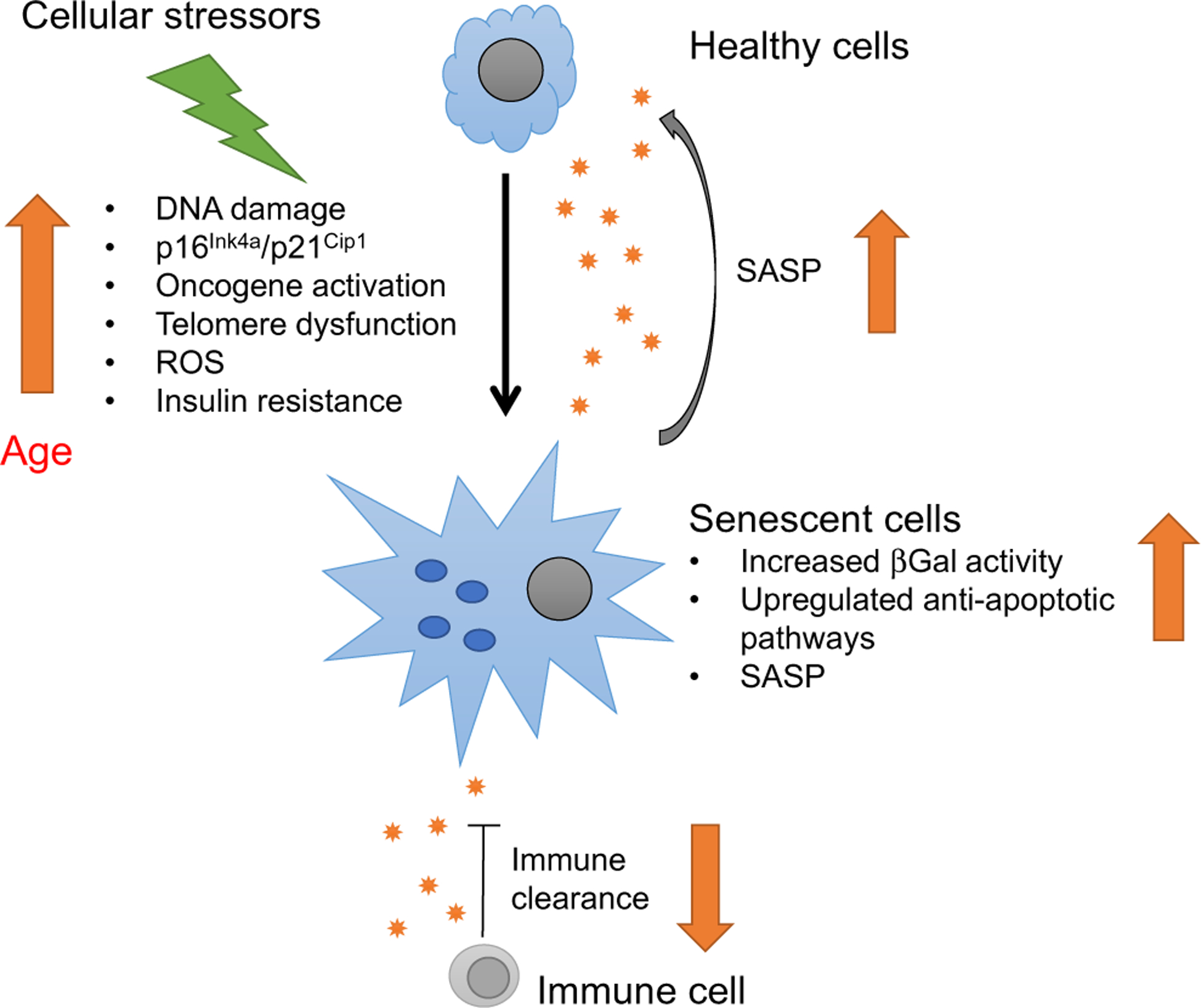Fig. 1.

Cellular senescence is a stress response (to DNA damage, ER stress, oncogene activation that induces expression of senescence markers and effectors p16Ink4a and p21Cip1) that leads to a lack of proliferation in response to growth stimuli, increased activity of senescence-associated (SA-βGal) and to the secretion of an array of proteins specific to each cell type known as SASP. SASP proteins include soluble and insoluble factors, such as chemokines, cytokines and extracellular matrix remodelling factors. SASP can induce dysfunction in surrounding cells and promote their entry into senescence, i.e. they have a ‘contagious-like’ effect. Some SASP proteins can recruit immune cells for clearance of senescent cells. Since senescence is a cellular stress response, it can occur at any time, but with age, cellular stressors increase and the immune response decreases, leading to an accumulation of senescent cells.
